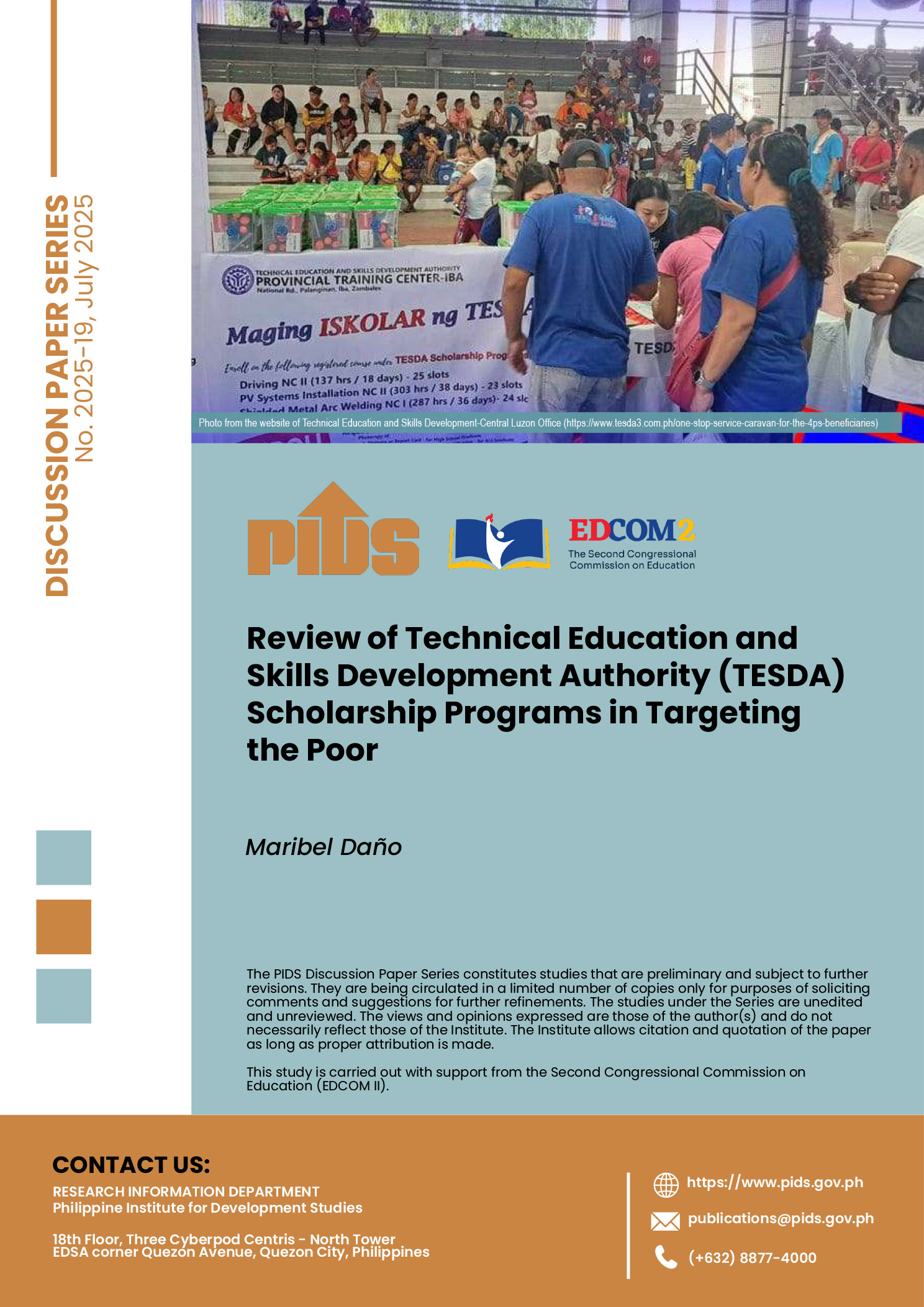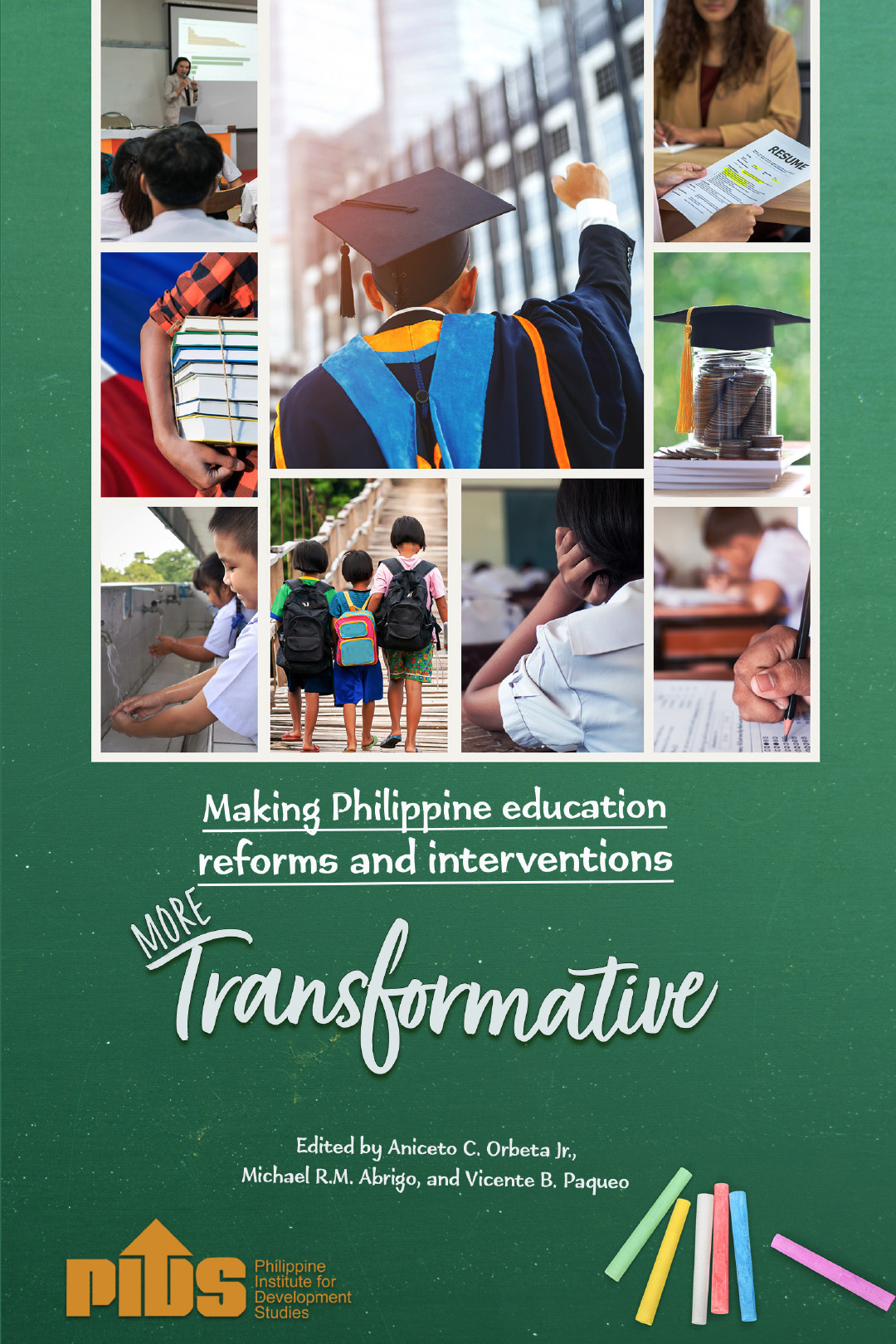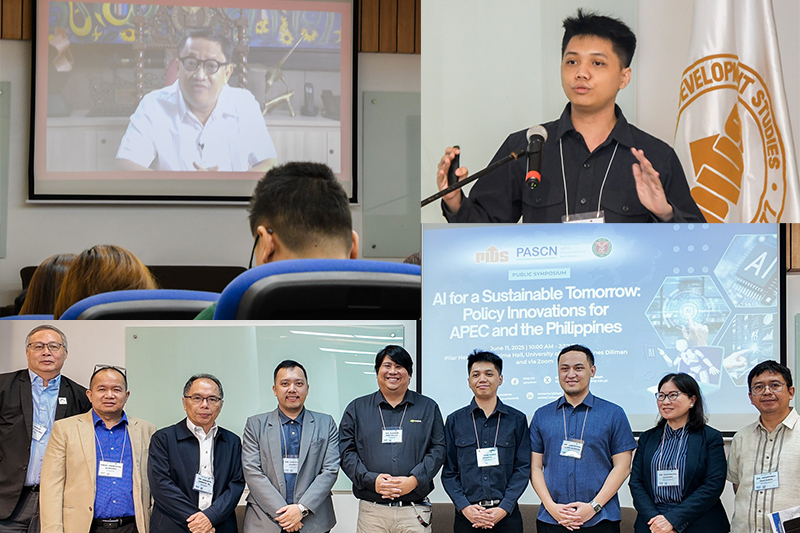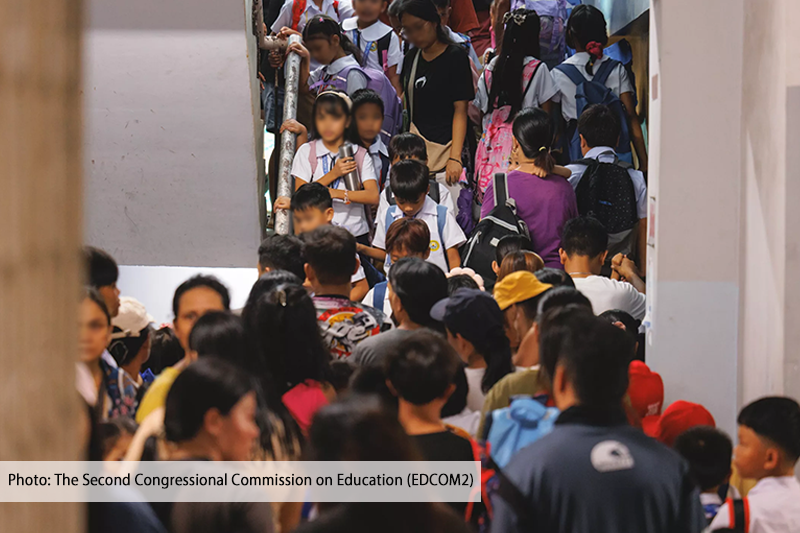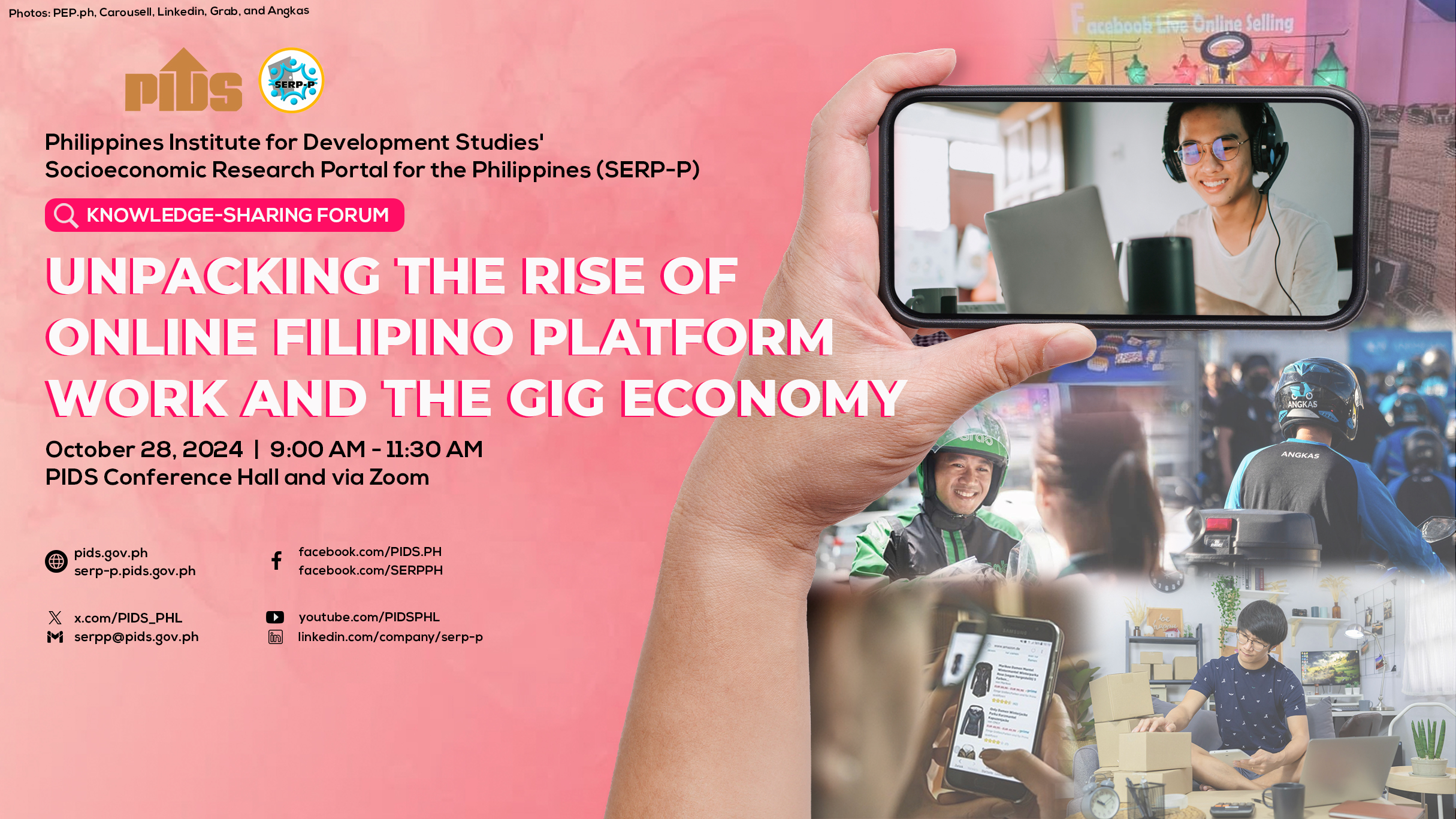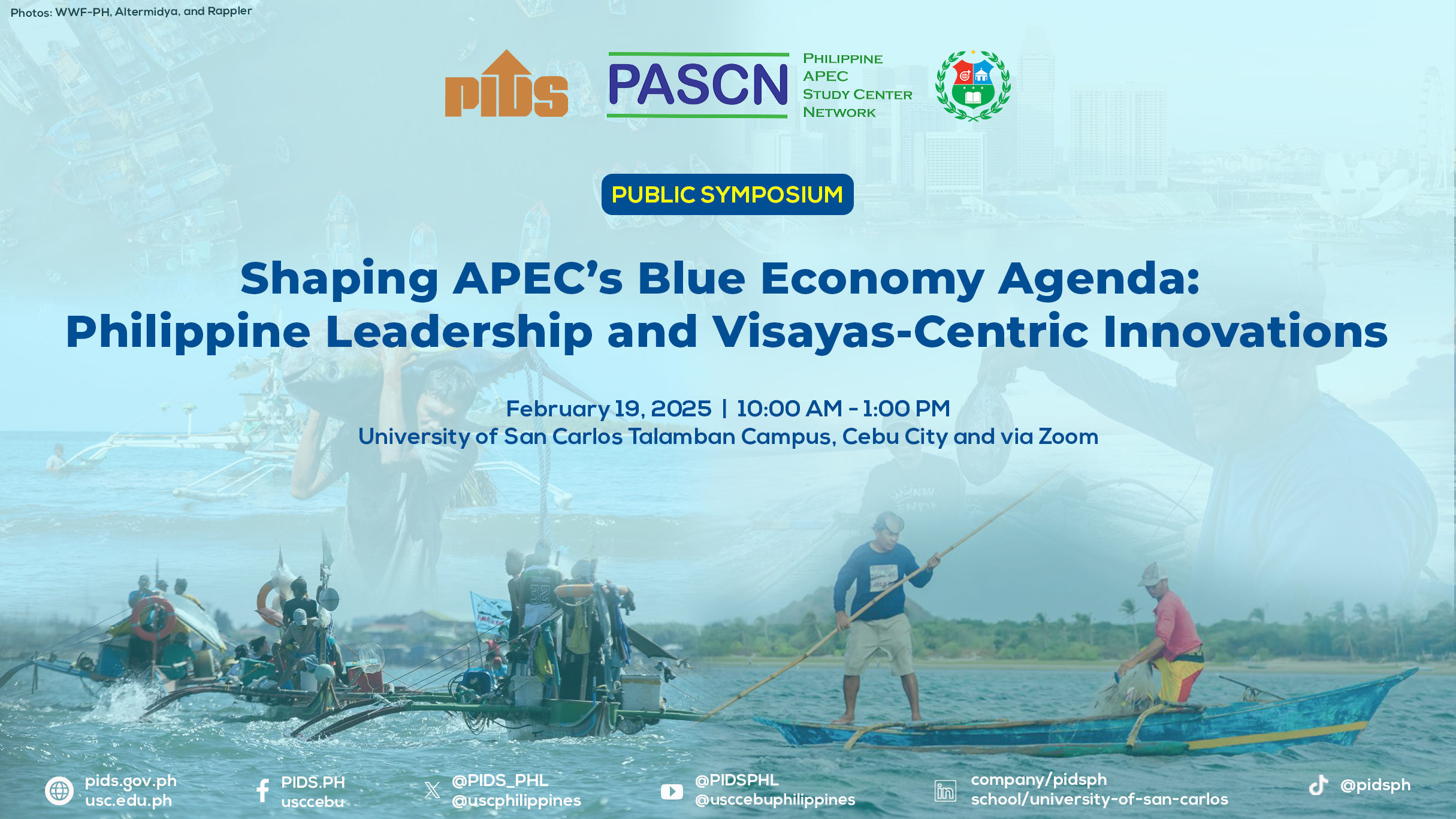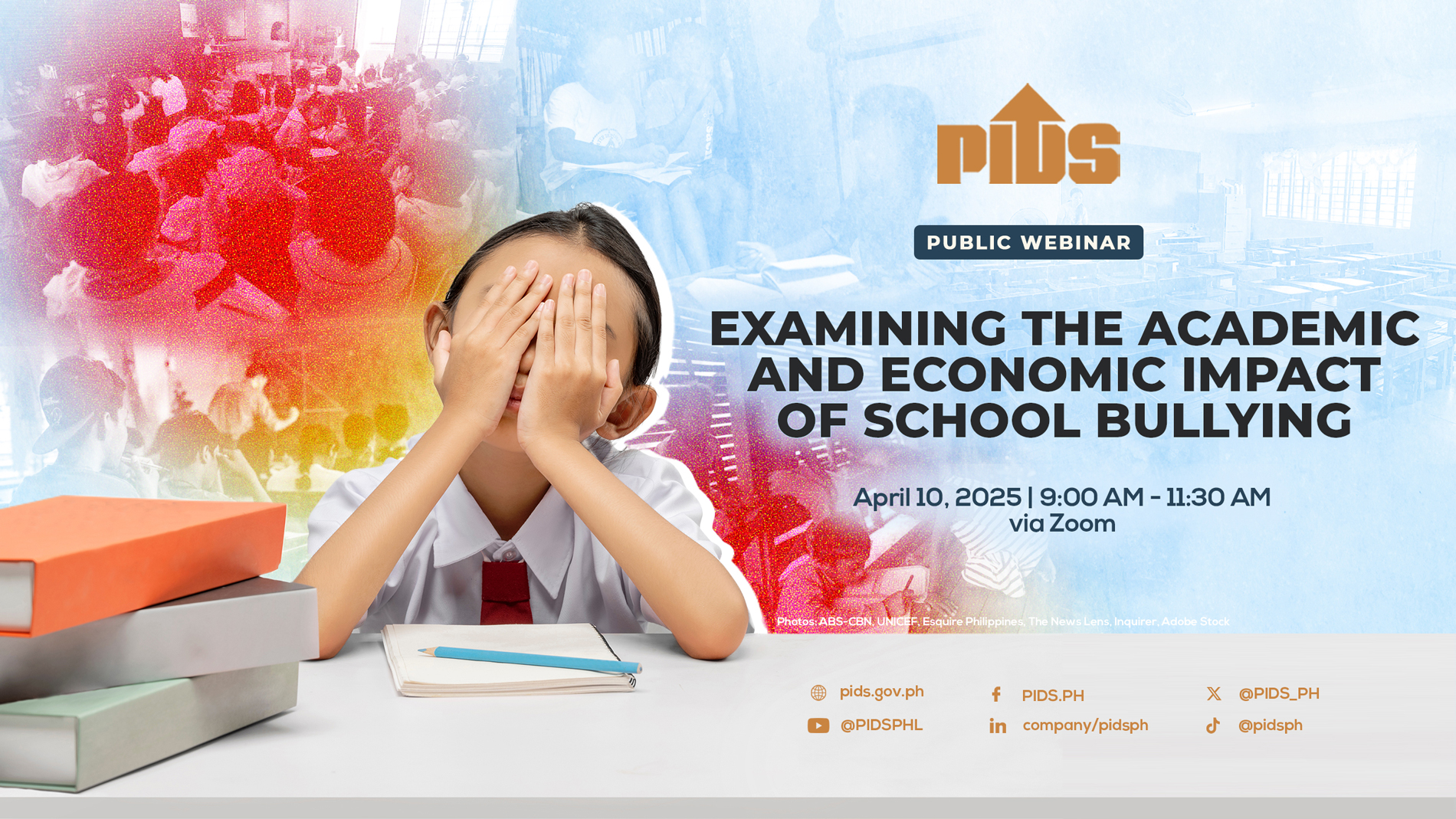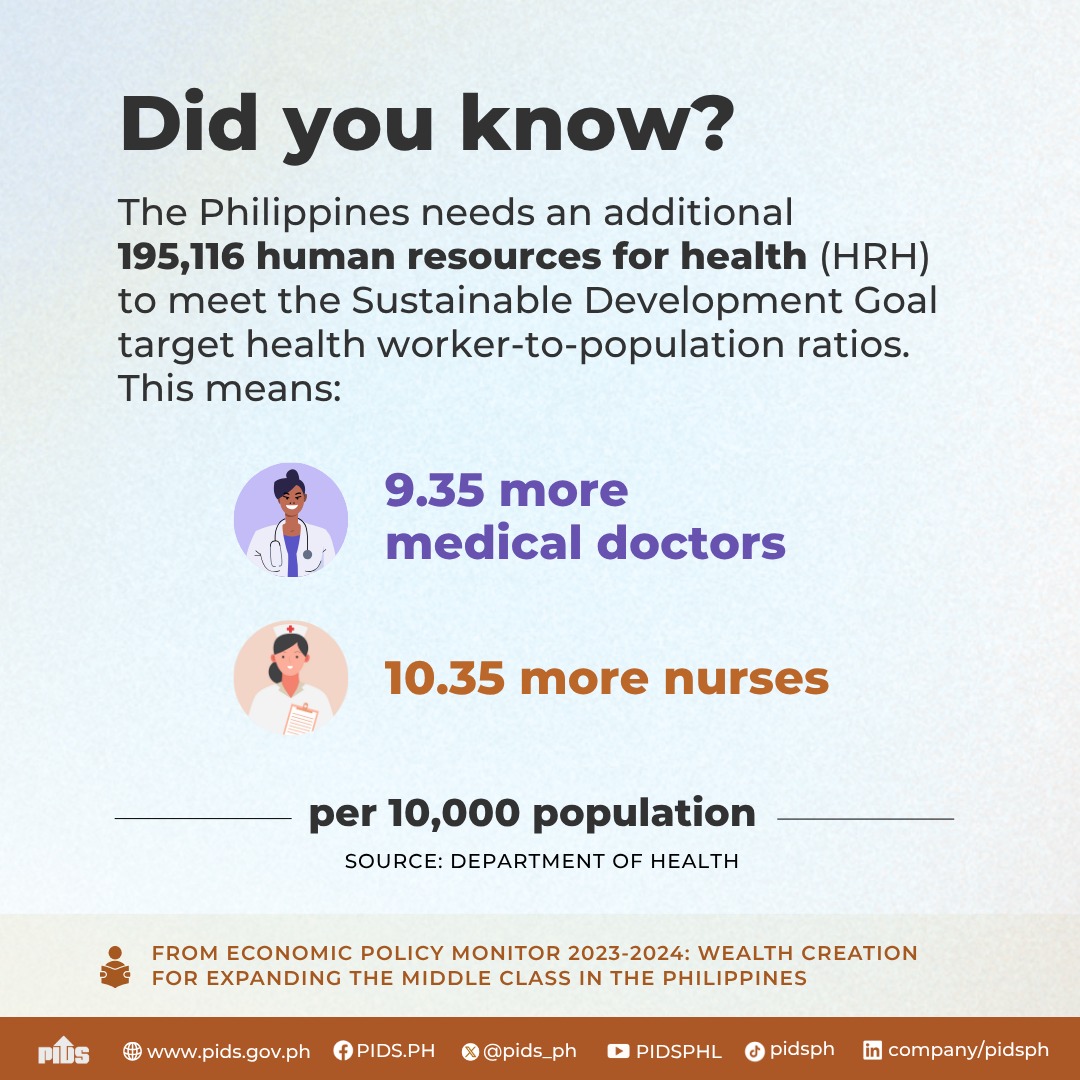The Philippines faces a growing education and economic crisis due to rampant school bullying, with research showing that bullying significantly undermines student achievement and could cost the country up to PHP20 billion in annual economic losses.
New findings from the Philippine Institute for Development Studies (PIDS) and the Longitudinal Cohort Study on the Filipino Child (LCSFC) revealed that the Philippines has one of the highest school bullying rates globally, based on the 2022 Programme for International Student Assessment (PISA) results.
PIDS Senior Research Fellow Dr. Michael Abrigo, lead author of the study “School Bullying Contributes to Lower PISA Achievement among Filipino Students: Who Gets Bullied? Why Does It Matter?,” presented their findings during a webinar on April 10, 2025.
“Bullying exposure explains around 0.05 standard deviation of the achievement gap between proficient and non-proficient students, translating to a projected PHP10-20 billion annual loss to the economy,” Abrigo said.
The Philippines’ bullying prevalence ranks highest among 80 PISA-participating countries, with 76 percent of Filipino students reporting at least one instance of bullying in the past year, and 36 percent categorized among the world’s “most bullied” students.
Abrigo explained that school bullying not only affects mental health and learning but also reduces future employment opportunities and earning potential, thus hindering national productivity.
“These losses are roughly equivalent to the Department of Education’s combined budget for textbooks and computerization programs in 2024,” Abrigo noted.
Utilizing human capital models, researchers found that bullying-induced learning losses could reduce GDP growth by 0.05 to 0.08 percentage points annually.
This economic burden compounds the Philippines’ longstanding educational challenges, as the country also ranked near the bottom in reading, math, and science proficiency in the 2022 PISA.
PIDS research using Blinder-Oaxaca decomposition showed that bullying accounts for a significant share of learning disparities, alongside socio-economic disadvantages and frequent school absences.
Alarmingly, students who have repeated grade levels or experienced hunger are more than twice as likely to be bullied compared to their peers.
Boys, public school students, and those from socioeconomically vulnerable regions—particularly Mindanao—are disproportionately affected.
Private school students and girls face a comparatively lower risk of bullying, offering potential insights for targeted interventions.
However, experts caution that bullying is a complex phenomenon not entirely captured by existing surveys.
“While PISA identifies bullying behaviors, it does not always use the term ‘bullying’ directly, which may affect interpretation,” said Dr. Allan Benedict I. Bernardo, Distinguished Full Professor at De La Salle University.
Bernardo urged policymakers to avoid oversimplifying the economic implications, emphasizing the need for nuanced, evidence-based approaches to tackle bullying.
“Linking bullying too directly to GDP losses may risk oversimplification,” Bernardo warned.
Despite these limitations, experts agree that bullying is a “modifiable risk factor,” meaning it can be addressed within a generation if proper policies are implemented.
“Unlike poverty or other structural inequalities, bullying is something we can do something about immediately,” Abrigo stressed.
BULLYING AT HOME
In a related study, PIDS’ longitudinal research highlighted how bullying at home, particularly physical abuse by parents or adults, severely disrupts children’s schooling outcomes.
“Physical bullying, especially from adults and parents, has expected negative effects on schooling outcomes,” said Dr. Alejandro Herrin, Policy Adviser at the University of San Carlos.
The the Longitudinal Cohort Study on the Filipino Child (LCSFC) data, which tracked 5,000 Filipino children from 2016 to 2022, found that 20 percent of students who were physically bullied at home fell behind their expected academic grade level by age 16.
Male children appeared particularly vulnerable, facing higher risks of falling behind compared to female peers.
Children exposed to emotional bullying by friends, on the other hand, displayed a curious trend.
“Interestingly, emotional hurt by friends and classmates was associated with better schooling outcomes,” Herrin said, suggesting potential resilience-building mechanisms at play.
However, researchers warned that this finding needs further study to determine if it reflects genuine resilience or is a statistical artifact.
“These are unexpected results and deserve additional investigation,” Herrin emphasized.
University of San Carlos Psychology Professor Dr. Delia Belleza explained that defining bullying precisely is critical.
“Bullying must be intentional, repeated, and involve a power imbalance,” Belleza said.
She cautioned that normal peer conflicts should not be mistaken for bullying, as misclassification could skew policies and interventions.
Adding another dimension to the challenge, Belleza highlighted the rise of cyberbullying.
“We have less control over what children click and who they interact with online,” she said, warning that cyberbullying often escapes traditional school monitoring systems.
Despite the alarming findings, experts agree that meaningful change is possible.
Herrin advocated for stronger implementation of anti-bullying programs in schools, supported by comprehensive mental health services.
“Policy is there, but implementation is the challenge,” Herrin said.
He called for empowering school heads, training guidance counselors, and involving communities in building safer, more supportive school environments.
Belleza emphasized the need for holistic interventions that foster resilience among all students, not just victims.
“Building a positive sense of self among students can weaken the dynamics of bullying,” she said.
Meanwhile, Bernardo noted that cultural change is essential to tackling the bullying problem in the Philippines.
“Our bigger problem may be that our students are looking at bullying as a normal part of school life,” Bernardo said.
He cited PISA data showing Filipino students’ relatively low disapproval of bullying, suggesting a worrying normalization of harmful behavior.
Tackling this mindset requires more than new policies; it demands a collective cultural shift toward empathy, respect, and proactive intervention.
Both PIDS and LCSFC findings recommend early childhood interventions, with evidence showing that attending nursery programs is associated with better schooling outcomes later in life.
Improved social integration, represented by higher social scale scores, also appears protective, reducing the likelihood of physical abuse at home.
On the flip side, witnessing violence at home was strongly linked to higher bullying victimization and poorer academic performance.
The studies also found that while school principals and guidance counselors are important, their presence alone does not significantly lower bullying rates without systemic support and active programs.
Machine learning models used in the PIDS study revealed that hunger, grade repetition, and enrollment in public schools were among the strongest predictors of being in the “most bullied” category.
The same models identified provinces where bullying risk is most severe, offering policymakers geographic targets for urgent intervention.
Importantly, the data highlighted that while socioeconomic inequality remains a major driver of educational disparities, bullying is an independent and modifiable factor that deserves immediate action.
International evidence suggests that comprehensive anti-bullying programs, if adapted well to the Philippine context, can reduce incidents and improve learning outcomes.
Abrigo, Herrin, Bernardo, and Belleza all called for greater investments in anti-bullying initiatives as part of broader human capital development strategies.
The Anti-Bullying Act of 2013 and related Department of Education Orders provide a strong legal foundation, but effective implementation remains inconsistent across schools and regions.
Experts urged that programs must go beyond reactive measures and focus on prevention, resilience-building, and cultural change.
As the Philippines prepares for its next rounds of education reforms under initiatives like Sulong EduKalidad and EDCOM II, addressing school bullying will be essential to building a more equitable, prosperous society.
“Our education system cannot afford to normalize harm,” Bernardo said.
Abrigo echoed this sentiment, concluding, “Every child saved from bullying is not only a moral victory but also an investment in the future of the nation.”

